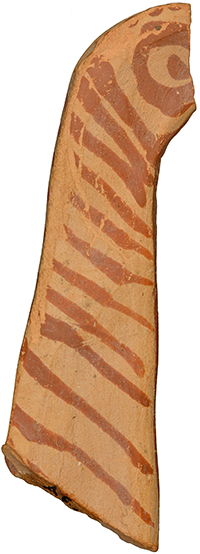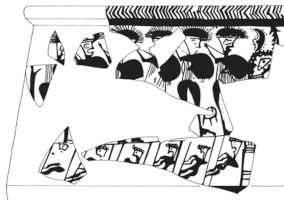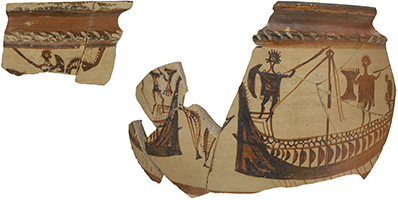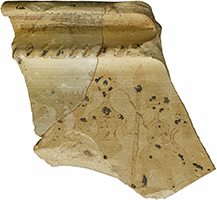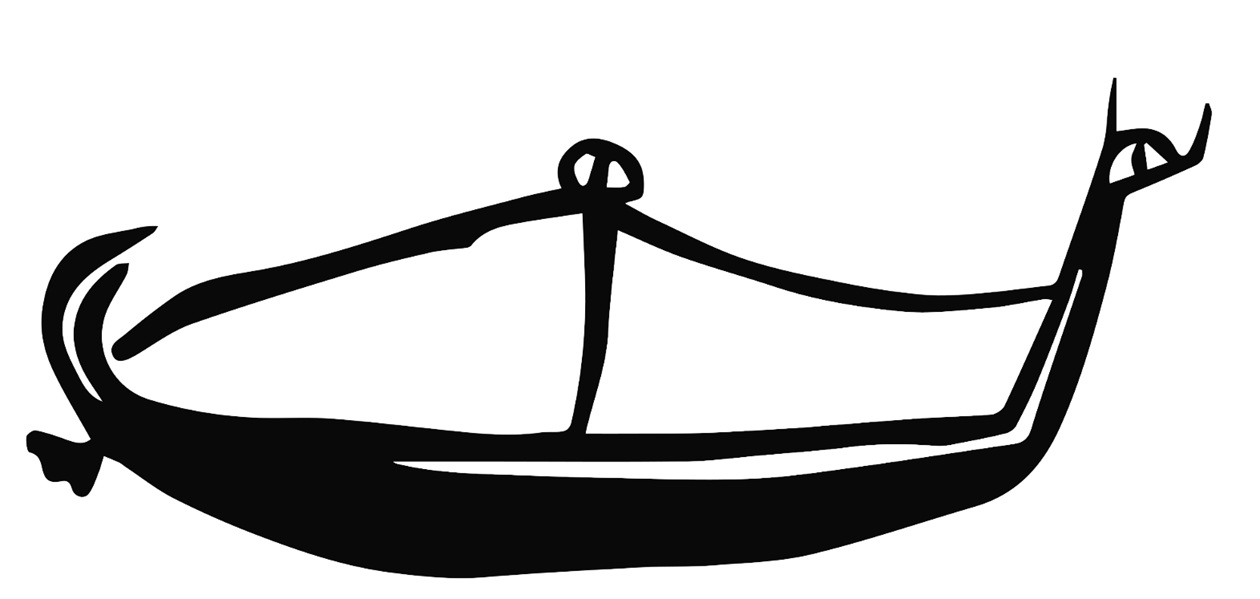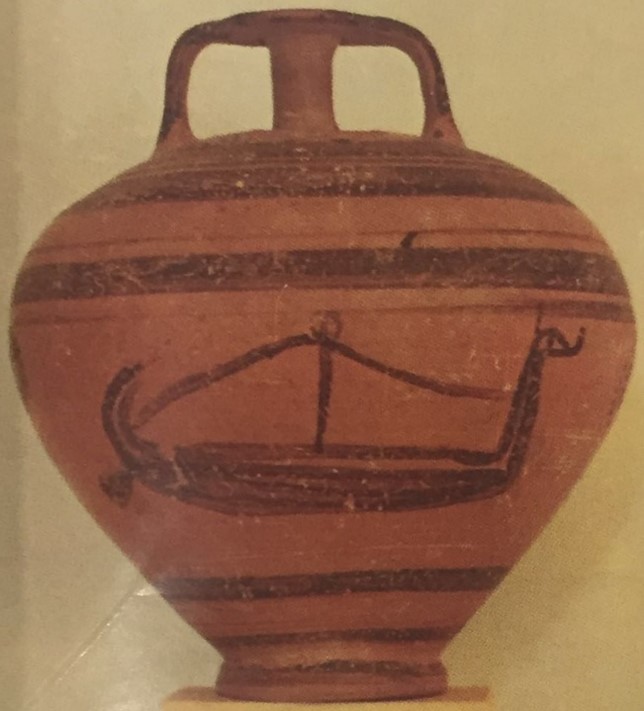Ship facing right with a long narrow hull in profile. Elongated, nearly vertical stempost slightly raking forward, ending in a zoomorphic figurehead. A narrow reserved line bisects the craft horizontally, continuing up the stempost. A single quarter-rudder of a somewhat odd shape appears below the stern. The ship is shown without a sail. Mast cap consists of only two sheaves through which the twin halyards were worked, indicating that the vessel prototype was equipped with the newly introduced loose-footed brailed sail. The depicted rigging is limited to a single forestay and backstay. Belongs to Wedde's Type V characterized by a straight-keeled hull with a raised sternpost (either straight or swung back and exhibiting bifurcation), a vertical stempost terminated by an animal or bird head, and a loose footed sail. Wedde considers the Skyros jar as the only secure identification of this type (Wedde 1996: 86).
Helladic galley
A87
LH IIIC
Skyros, tomb context
H: 23.8 cm; max. diameter: 22.2 cm; diameter base: 8.2 cm; ship L: 19.9 cm; ship H: 6.9 cm
Large stirrup jar. Brown shifting to red clay, flesh-colored slip and brown-black paint.
Skyros Archaeological Museum A77
Bass 1972: 23, fig. 21; Delivorrias 1987: 153, nr 52; Hencken 1968: 537, fig. 486; Morrison and Williams 1968: 11, BA11; Parlama 1984: 146-151, col. Pl.A; Tartaron 2013: 79, fig. 3.18; Vermeule 1964: 259, fig. 43f; Wachsmann 1981: 201; 1998: 139-40; Wedde 2000: no. 655
The figurehead should not be interpreted as a bird but rather a hybrid monster. A protrusion at the back appears to resemble an ear. Since no such protrusions are observable on birds depicted on LH IIIC pottery, the figure has caused disagreements in the literature, variously interpreted as the head of a horse, goat or a griffin besides the usual reading of a bird (Wedde 2000: 123; Yasur-Landau 2010: 400). The reserve line along the hull may represent an open rowers' gallery (Wachsmann 1981: 201). Dakoronia interprets this vessel as a small fishing boat (Dakoronia 2002: 287).
Bass, G.F. 1972. A History of Seafaring based on Underwater Archaeology. London: Thames and Hudson.
Delivorrias, A. (ed.) 1987. Greece and the Sea. Catalogue of the exhibition organized by: the Greek Ministry of Culture, the Benaki Museum, the National Foundation De Nieuwe Kerk, Amsterdam, in honour of Amsterdam Cultural Capital of Europe 1987. Athens.
Hencken, H. 1968. Tarquinia, Villanovans and early Etruscans. Cambridge: Harvard University Press.
Morrison, J.S. and R.T. Williams. 1968. Greek Oared Ships: 900-322 B.C. Cambridge: Cambridge University Press.
Parlama, L. 1984. Σκύρος Η Σκύρος στὴν ἐποχὴ του Χαλκού. Athens.
Tartaron, T. F. 2013. Maritime Networks in the Mycenaean World. Cambridge: Cambridge University Press.
Vermeule, E. 1964. Greece in the Bronze Age. Chicago: University of Chicago Press.
Wachsmann, S. 1981. “The Ships of the Sea People,” IJNA 10: 187-220.
―――. 1998. Seagoing Ships & Seamanship in the Bronze Age Levant. College Station, TX: Texas A&M University Press.
Wedde, M. 2000. Towards a Hermeneutics of Aegean Bronze Age Ship Imagery. Peleus Studien zur Archäologie und Geschichte Griechenlands und Zyperns, vol. 6. Bibliopolis: Mannheim and Möhnsee.



